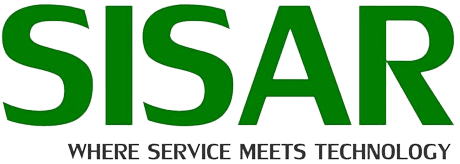Introduction
When it comes to cloud computing, organizations face the challenge of choosing the right platform that offers the best value and capabilities. Traditional public cloud providers offer similar services, but VMware Cloud takes a different approach.

In this article, we will examine the advantages of VMware Cloud over conventional public cloud environments, dispel misconceptions about its cost, and highlight its extended functionality.
The Fundamental Notion Behind VMware Cloud
At the core of VMware Cloud is the belief that it provides customers with more capabilities at a lower cost than traditional cloud environments. VMware Cloud is specifically designed for multi-cloud, offering a compatible platform with a broad set of integrated infrastructure capabilities.
It supports the requirements of any enterprise workload, accelerating application modernization in both the data center and the cloud. With VMware Cloud, organizations can migrate rapidly to any cloud and unify new and old environments with consistent operations and security.
VMware Cloud Economics Model
To compare VMware Cloud with traditional public cloud offerings, the VMware Cloud Economics team developed a methodology that ensures a fair evaluation. By comparing the functionality and services of both platforms, organizations can make informed decisions regarding their cloud implementation or migration.
Cloud Platform Comparison
The platforms must be functionally equivalent to conduct a fair comparison. VMware Cloud is a complete customer solution, providing essential technologies for building, running, and maintaining enterprise-grade applications. In contrast, achieving the same operational functionality on a public cloud requires additional services beyond compute and storage costs. These other services often come at a higher expense and may offer a different level of enterprise readiness.
Basic Assumptions for Both Environments
In evaluating the costs associated with a move to the cloud, it is crucial to consider all aspects, including the acquisition, installation, and operation of workloads. For the comparison, we will assume the following:
- Three-year prepaid reserved instance pricing
- 1,000 virtual machines (VMs) running on 28 i3 nodes with approximately 300TB of NVMe block storage
- Average VM utilizing four vCPUs with 16GB vRAM
- AWS m5.xlarge EC2 instance-type
- Elastic Block Storage (EBS)
- No discount for either solution
These assumptions provide a baseline workload for the model, representing an average enterprise workload comprised of multiple production applications. Additionally, the model is based on data derived from the VMware Cloud on AWS full workload set, ensuring real-world relevance.
Baseline Architecture for Each Solution
The baseline architecture for each solution includes various components that contribute to the overall functionality and capabilities. For VMware Cloud, the architecture consists of the VMware Cloud Console, VMware Software-Defined Data Center (SDDC), VMware HCX, VMware Tanzu services, dedicated Amazon EC2 Bare Metal Instances, VMware Global Support, VMware vCenter Lifecycle Manager, and support for High Availability (HA) and Stretched Clusters.
The NSX software suite notably provides centralized network configuration and management, ensuring security coverage and granular analytics.
Is VMware Cloud the same as a traditional public cloud?
One common misconception is that VMware Cloud is more expensive than traditional public cloud offerings. Nevertheless, VMware Cloud does not rely on the complete software stack offered by a public cloud provider.
Instead, VMware deploys the complete Software-Defined Data Center (SDDC) stack, VMware Cloud Foundation, on bare-metal hosts. This deployment strategy leads to verifiable savings for cloud implementation or migration projects.
Understanding Where Savings Come From
When considering costs, organizations often focus solely on acquiring computing resources. However, a proper comparison must account for the total cost of ownership, including advanced networking, shared storage, support, and switching costs associated with cloud migration.
Direct Costs
Direct costs pertain to the extra native cloud services needed to match the functionality of VMware Cloud on AWS. VMware Cloud on AWS is designed to complement the adjacent services offered natively by AWS. The features of each solution will be compared according to how they are leveraged in this case. This highlights the embedded enterprise features and capabilities of VMware Cloud on AWS.
Migration
Migrating to the cloud is a significant part of any cloud project in terms of time and money. The VMware Cloud Economics model estimates 11 hours of staff time to migrate a VM from vSphere to a hyperscaler platform.
However, with VMware Cloud, the average time to move a vSphere VM is 15-20 minutes, thanks to the VMware vSphere vMotion feature and the HCX software package. As migration occurs gradually, organizations must run current and future platforms simultaneously, resulting in additional storage, management, and other resource costs.
Network Services
VMware Cloud provides many network services, including a tiered SDDC network, NSX Edge Appliance, Management Gateway (MGW), and Compute Gateway (CGW). These services offer centralized network configuration, routing, firewalling, and traffic control.
Achieving similar functionality in a traditional public cloud environment would require adding five native services, including Site-to-Site VPN, Network Address Translation (NAT) Gateway, Elastic Load Balancer, Network Firewall, and AWS Transit Gateway.
Security
Security is a fundamental aspect of VMware Cloud, powered by NSX and micro-segmentation. NSX offers advanced security components such as reachability analysis, traffic mirroring, and micro-segmentation. Achieving similar security features and functionality in a traditional public cloud environment would require adding native AWS security services.
Observability and Management
Observability and management are crucial in understanding the cost of moving to the cloud. VMware offers Aria Operations Cloud and Aria Log Insight Cloud as part of its management platform. These services offer uninterrupted performance enhancement, capacity and cost oversight, proactive planning, intelligent issue resolution, and seamless compliance integration.
Achieving feature parity with the native cloud requires the addition of Amazon CloudWatch and AWS CloudTrail.
Indirect Costs: VMware Technology Value
In addition to direct costs, VMware Cloud offers several features that avoid additional expenses by efficiently utilizing resources. These functionalities encompass CPU oversubscription, storage compression, deduplication, and RAM overcommitment.
CPU oversubscription allows organizations to oversubscribe CPUs on VMware Cloud hosts, effectively increasing the number of workloads that can be sustained on physical hosts. Storage compression and deduplication reduce the storage required, resulting in lower operational costs. RAM overcommitment allows for the assignment of more virtual memory than exists on the hardware, reducing the number of physical hosts needed to support workloads.
Conclusion
When comparing VMware Cloud to traditional public cloud offerings, it becomes evident that it provides more capabilities at a lower total cost over the life of a cloud project.
Organizations can accelerate application modernization and achieve consistent operations and security across all environments by leveraging a compatible platform with integrated infrastructure capabilities. The comprehensive analysis of costs and functionality highlights the long-term benefits of VMware Cloud.
If you’re considering a cloud implementation or migration project, contact SISAR for a Cloud Economics analysis tailored to your needs.






